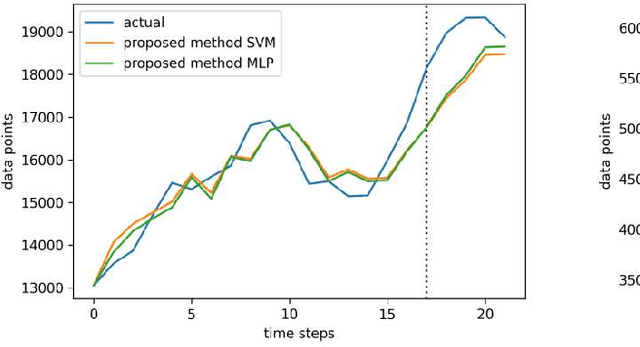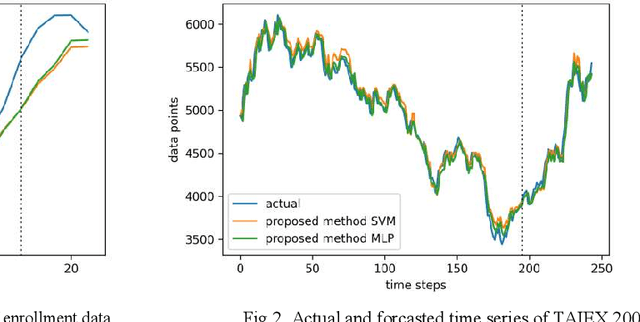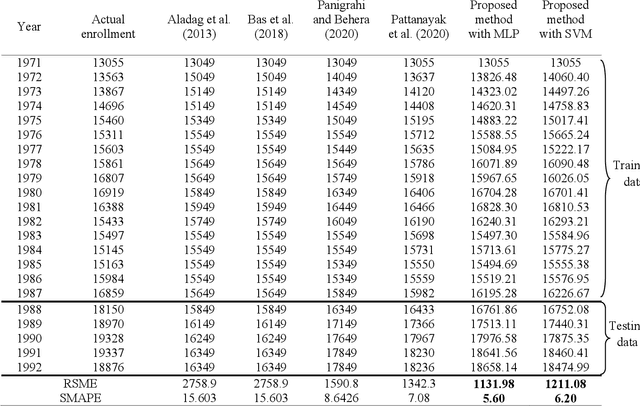A novel method of fuzzy time series forecasting based on interval index number and membership value using support vector machine
Paper and Code
Oct 20, 2020



Fuzzy time series forecasting methods are very popular among researchers for predicting future values as they are not based on the strict assumptions of traditional time series forecasting methods. Non-stochastic methods of fuzzy time series forecasting are preferred by the researchers as they provide more significant forecasting results. There are generally, four factors that determine the performance of the forecasting method (1) number of intervals (NOIs) and length of intervals to partition universe of discourse (UOD) (2) fuzzification rules or feature representation of crisp time series (3) method of establishing fuzzy logic rule (FLRs) between input and target values (4) defuzzification rule to get crisp forecasted value. Considering the first two factors to improve the forecasting accuracy, we proposed a novel non-stochastic method fuzzy time series forecasting in which interval index number and membership value are used as input features to predict future value. We suggested a simple rounding-off range and suitable step size method to find the optimal number of intervals (NOIs) and used fuzzy c-means clustering process to divide UOD into intervals of unequal length. We implement support vector machine (SVM) to establish FLRs. To test our proposed method we conduct a simulated study on five widely used real time series and compare the performance with some recently developed models. We also examine the performance of the proposed model by using multi-layer perceptron (MLP) instead of SVM. Two performance measures RSME and SMAPE are used for performance analysis and observed better forecasting accuracy by the proposed model.
 Add to Chrome
Add to Chrome Add to Firefox
Add to Firefox Add to Edge
Add to Edge